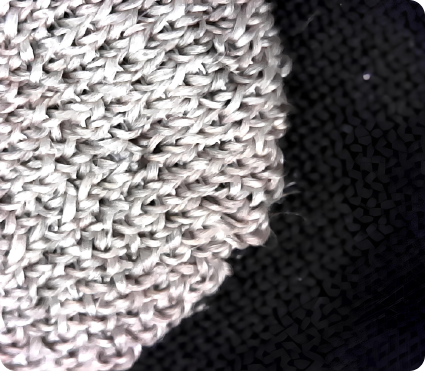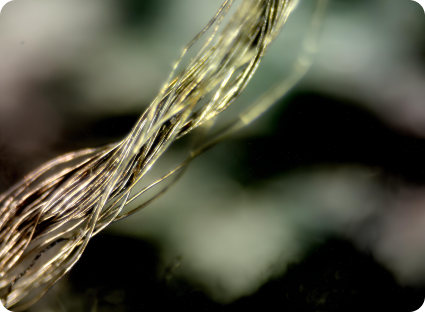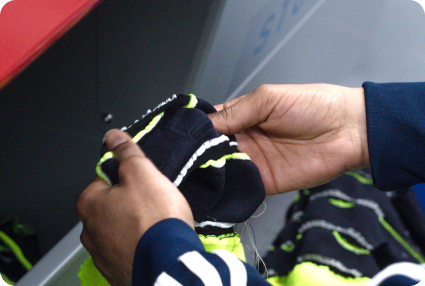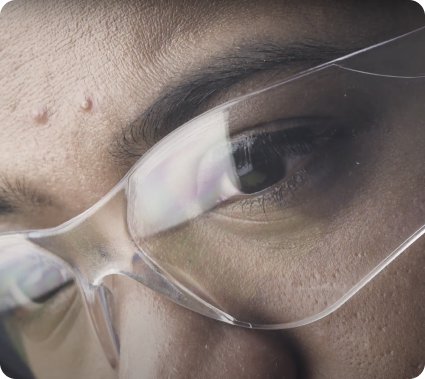Where science and technology intersect with art and fashion
Functional textiles is where materials science, textile innovation, biomedical, electrical, and mechanical engineering intersect to create functional fabrics through knitting, weaving, or embroidery.
At Myant X we continuously investigate and develop new approaches, techniques, and cutting-edge equipment to build a robust Textile Computing™ system. We use state-of-the-art machinery and tools to create and assemble unique functionalized textile solutions.


Fibres & Yarns
Myant’s in depth exploration of conductive materials and functional yarns provide a library of ready-to-use as well as ready-to-take-to-the-next level technology. These innovative yarns can be used materials that can: pick up electrical signals; provide thermal regulation; control moisture; deliver heat and electrical stimulation; possess antimicrobial properties, or deliver a multitude of other features.
Our proprietary testing protocols and equipment ensure what is built will last.
Knitting / Embroidery / Cut & Sew
At Myant X we have the equipment to do quick turn prototypes, built with production optimization to-scale manufacturing
Our facilities are equipped with state of the art and modified for smart apparel manufacturing machines, from circular and flat bed knitting, to embroidery, weaving, and full cut & sew operations.

Textile Design
Breaking away, but building from, Textile design strives to bridge form and function. Engineering the integration of technologies in a way that elevates the features of textile interfaces while focusing on human centric design. WIth thought-through integrated feature placement of passive and active elements, using a combination of materials and structural properties.
The design of functionalized textiles considers biomechanics, physiological and anthropometric data and use case scenarios, and never compromising fit, comfort, and durability. At Myant X, we design to fit, and design to last

Human Factors
Purpose driven design. Extensive research in industrial design can support and inform the development of Textile Computing™ technologies. A focus on the physiological and psychological aspects of design can allow for effective and impactful solutions that are both functional and user-friendly.
User-centered research is performed, including concept ideation, prototype development, 3D modeling, and subsequent usability and human factors testing, with target groups representing potential end-users. An iterative approach is taken based on feedback from users’ needs that brings about the necessary design changes to enhance the technology and to validate benefits to users.